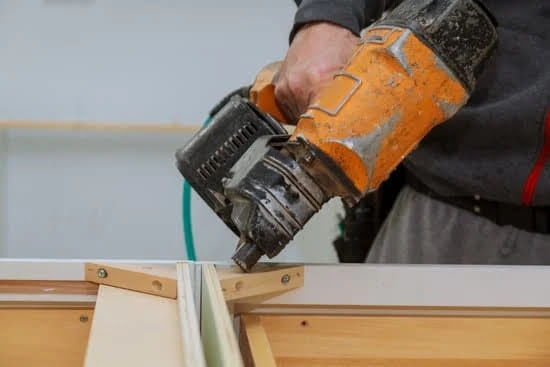Woodworking chisels are essential tools for any woodworker, allowing precise and detailed work in crafting beautiful projects. However, to ensure the longevity and effectiveness of these tools, it is crucial to know how to store woodworking chisels properly. The way you store your chisels can impact their sharpness, edge retention, and overall condition. In this article, we will discuss the importance of proper storage methods for woodworking chisels and provide valuable tips on maintaining and organizing these tools.
One key factor in storing woodworking chisels is understanding the different types available in the market. From bench chisels to mortise chisels, each type serves a specific purpose and requires specific care when it comes to storage. By learning about the various types of woodworking chisels and their differences, woodworkers can make informed decisions on how best to preserve and organize their tools.
When it comes to selecting the right storage location for your woodworking chisels, there are several factors to consider. Factors such as humidity levels, temperature fluctuations, and exposure to sunlight can all impact the quality of your chisel blades. By choosing a suitable storage location and implementing creative DIY storage solutions, woodworkers can protect their chisels from damage and ensure they remain sharp and ready for use.
Types of Woodworking Chisels
Woodworking chisels come in a variety of types, each designed for specific tasks and applications. Understanding the differences between these chisels can help woodworkers choose the right tool for the job. Some common types of woodworking chisels include bench chisels, mortise chisels, paring chisels, dovetail chisels, and skew chisels.
Bench chisels are versatile and used for general woodworking tasks, while mortise chisels are heavier and designed for chopping out joints. Paring chisels have long blades for precise trimming, dovetail chisels are used for creating joints with angled sides, and skew chisels have beveled edges for clean cuts on spindle work.
When it comes to storing woodworking chisels, it is important to consider the type of material they are made from. High-quality carbon steel or high-speed steel blades should be protected from moisture to prevent rusting. One effective way to store woodworking chisels is by using a wooden storage rack or tool chest with individual slots for each chisel.
This not only keeps them organized but also prevents them from banging against each other and getting damaged. Another option is to hang your chisels on a pegboard or magnetic strip in your workshop for easy access.
Proper maintenance of woodworking chisels is essential to keep them in top condition. After each use, make sure to clean off any debris and apply a light coat of oil to prevent corrosion. Sharpening your blades regularly will ensure that they stay sharp and ready for use.
Additionally, storing your woodworking chisel in a dry environment away from extreme temperatures will help prolong its lifespan. By following these maintenance tips and storing your chisels properly, you can protect your investment and enjoy working with quality tools for years to come.
| Woodworking Chisel Type | Description |
|---|---|
| Bench Chisel | Versatile tool for general woodworking tasks |
| Mortise Chisel | Heavy-duty tool designed for chopping out joints |
| Paring Chisel | Long-bladed tool for precise trimming |
| Dovetail Chisel | Used for creating joints with angled sides |
| Skew Chisel | Beveled-edge tool for clean cuts on spindle work |
Choosing the Right Storage Location
Properly storing woodworking chisels is essential to ensure they remain sharp, safe, and in good condition for use. One of the key factors to consider when choosing a storage location for your chisels is accessibility. You want to store them in a place where they are easily reachable whenever you need them for a project. Consider a location that is convenient and where you can quickly grab the right chisel without any hassle.
Temperature and Humidity
Another important factor to take into account when selecting a storage location for your woodworking chisels is temperature and humidity. Chisels are made of metal, which can be susceptible to rust if not stored properly. It is crucial to choose a storage area that has controlled humidity levels and is not subject to extreme temperature fluctuations. Avoid storing your chisels in damp or overly humid areas, as this can lead to corrosion and damage.
Protection From Damage
In addition to accessibility and environmental factors, another consideration when deciding on a storage location for your chisels is protection from damage. You want to store your chisels in a way that prevents them from getting dinged, nicked, or bent. Consider using tool rolls, racks, or custom-made cases to keep your chisels organized and protected.
It is also important to avoid storing them with other tools that could potentially cause harm or dull the blades of your chisels. By taking these factors into consideration, you can ensure that your woodworking chisels are stored safely and effectively for continued use in your projects.
DIY Chisel Storage Solutions
Proper storage of woodworking chisels is essential to keeping them sharp, safe, and in good condition for long-lasting use. While there are many options available on the market for chisel storage, DIY solutions can be just as effective and budget-friendly. This section will explore creative ideas for organizing your woodworking chisels at home.
Wall-Mounted Chisel Rack
One popular DIY storage solution for woodworking chisels is a wall-mounted rack. This can be easily made using a piece of wood, dowels, or even PVC pipe. Simply drill holes into the wood or pipe at intervals that match the size of your chisel handles. Mount the rack securely on a wall in your workspace and insert your chisels with the blades facing downward for safety.
Toolbox Foam Insert
Another practical DIY option is to create a custom foam insert for your toolbox or tool chest. This allows you to safely store and transport your woodworking chisels without them getting damaged or dulling the blades. Cut out sections of foam to fit each chisel snugly and label them accordingly for easy access and organization.
Magnetic Strip Storage
For a simple yet effective solution, consider attaching a magnetic strip to the wall in your workshop. Magnetic strips can securely hold metal tools like woodworking chisels in place, making them easily accessible while also keeping them organized and visible. This method is great for those who prefer their tools within reach at all times. Remember to store the blades pointing downwards to prevent any accidents.
By implementing these creative DIY storage ideas for organizing your woodworking chisels, you can not only keep your tools neatly arranged but also extend their lifespan by protecting them from unnecessary wear and tear. Whatever method you choose, prioritize safety and convenience when storing your chisels to ensure they are always ready for use whenever inspiration strikes.
Proper Maintenance Tips
Proper maintenance of your woodworking chisels is crucial to ensure their longevity and optimal performance. By taking good care of your chisels, you can avoid unnecessary wear and tear, maintain sharp edges, and ultimately produce better results in your woodworking projects. Here are some essential tips on how to store woodworking chisel properly:
- Always clean your chisels after each use to remove any debris or residue that may have accumulated during your woodworking tasks. Use a soft cloth or brush to wipe down the blades and handles thoroughly.
- Before storing your chisels, make sure they are completely dry to prevent any rust or corrosion. Moisture can damage the metal components of the chisel, so it is important to keep them stored in a dry environment.
- Consider using protective covers or sheaths for the blades of your chisels to prevent accidental nicks or dulling when not in use. This will help maintain sharp edges and prolong the life of your chisel blades.
Properly storing woodworking chisels also involves keeping them organized and easily accessible for future use. By implementing these maintenance tips, you can ensure that your chisels remain in top condition and ready for all your woodworking projects.
- Invest in a dedicated storage rack or drawer specifically designed for holding chisels. This will help prevent them from getting damaged or misplaced among other tools in your workshop.
- Label each chisel with its size and type to avoid confusion and make it easier to identify the right tool for the job. This simple step can save you time and frustration when searching for a specific chisel.
- Store your chisels in a secure location away from moisture, extreme temperatures, and direct sunlight. Consider hanging them on a pegboard or installing wall-mounted holders for easy access while keeping them safely out of the way.
By following these maintenance tips on how to store woodworking chisel properly, you can protect your tools, prolong their lifespan, and ensure that they are always ready for use whenever you need them during your woodworking projects.
Importance of Protecting Chisel Blades
Properly storing woodworking chisels is essential not only for maintaining their sharpness and longevity but also for ensuring safety in the workshop. One of the key aspects of chisel care is protecting the blades, as they are the most vital component of these tools. By following best practices for blade care, woodworkers can prolong the life of their chisels and prevent damage that may affect their performance.
Here are some tips on how to store woodworking chisel blades effectively:
- Always clean and dry the blades after each use to prevent rust and corrosion.
- Use blade guards or covers to protect the cutting edge from nicks and dings during storage.
- Avoid storing chisels with other metal tools that may come into contact with the blades and cause damage.
Additionally, proper maintenance of chisel blades includes sharpening them regularly to maintain their cutting edge. This can be done using sharpening stones, honing guides, or a sharpening system. Keeping the blades sharp not only improves their performance but also reduces the risk of accidents while working with dull tools.
When storing woodworking chisels, it’s important to consider investing in a storage solution that helps keep the blades protected and organized. Whether it’s a wall-mounted rack, a tool chest with dedicated compartments, or a custom-made chisel holder, having a designated place for your chisels can make it easier to access them when needed and ensure they are stored safely.
By following these practices for blade care and choosing the right storage option, woodworkers can maintain their woodworking chisels in top condition for years to come.
Safety Tips for Storing Chisels
Storing woodworking chisels properly is crucial not just for keeping your tools organized, but also for preventing accidents and injuries. Improperly stored chisels can pose a safety hazard in the workshop, especially if they are left lying around or stored haphazardly. By following some simple safety tips, you can ensure that your chisels are securely stored and ready for use whenever you need them.
One important safety tip for storing chisels is to always keep them in a designated storage area when not in use. This could be a tool chest, a wall-mounted rack, or a specially designed chisel holder.
By having a specific place to store your chisels, you reduce the risk of accidentally stepping on or tripping over them in the workshop. Additionally, storing your chisels properly can help prevent damage to the cutting edge or blade, ensuring they stay sharp and ready for work.
Another essential safety practice when storing woodworking chisels is to always cover the sharp blades when not in use. Whether using blade guards, blade sleeves, or even makeshift covers like cardboard or rubber caps, protecting the cutting edge of the chisel is vital for both safety and maintaining its sharpness. Accidentally grabbing an uncovered sharp blade can result in serious cuts or injuries, so taking this extra precaution is well worth it.
| Safety Tip | Importance |
|---|---|
| Designate a storage area | Reduces risk of accidents and keeps tools organized |
| Cover sharp blades | Prevents injuries and maintains blade sharpness |
Review of Chisel Storage Products
When it comes to storing woodworking chisels, there are various products available to help keep your tools organized and in top condition. One popular option is the chisel roll, which is a convenient and portable storage solution for woodworkers on the go. Chisel rolls typically have individual slots or pockets for each chisel, allowing you to easily store and transport your tools without the risk of damage or dulling.
Another recommended product for storing woodworking chisels is a chisel rack or stand. These storage options are ideal for woodworkers who have a dedicated workspace and want easy access to their chisels while keeping them neatly displayed. Chisel racks often come in different sizes and designs to accommodate various types of chisels, making them a versatile choice for any woodworking shop.
For those looking for a more compact storage solution, magnetic tool holders are also a great option for storing woodworking chisels. These holders can be attached to walls or tool boxes, providing a secure and space-saving way to store your chisels.
The strong magnets keep the blades firmly in place, reducing the risk of accidental cuts or damage when not in use. Overall, investing in quality storage products is essential for maintaining the longevity and performance of your woodworking chisels.
Conclusion
Properly storing woodworking chisels is essential for maintaining their sharpness, prolonging their lifespan, and ensuring safety in the workspace. By following the right storage practices and maintenance tips, woodworkers can protect their valuable tools and optimize their performance for years to come. Choosing the appropriate storage location, utilizing DIY storage solutions, and implementing proper maintenance techniques are all crucial aspects of caring for woodworking chisels.
When considering how to store woodworking chisel, it is important to take into account factors such as humidity levels, temperature fluctuations, and exposure to moisture or direct sunlight. These conditions can greatly impact the quality of the chisel blades and overall functionality of the tools. By selecting a suitable storage location that meets these criteria, woodworkers can prevent rusting, warping, or other damage to their chisels.
In conclusion, investing time and effort into properly storing woodworking chisels is well worth it in the long run. By following the guidelines outlined in this article and taking proactive measures to protect your chisels, you can ensure they remain in top condition and ready for use whenever needed.
Whether you opt for DIY storage solutions or purchase specialized chisel storage products, prioritizing the care of your woodworking tools will ultimately enhance your craft and make your work more efficient and enjoyable.
Frequently Asked Questions
How Should a Chisel Be Stored?
A chisel should be stored in a dry place to prevent rust from forming on the metal blade. It is best to store it in a chisel roll or pouch to protect the cutting edge and prevent accidental damage.
Does Chisel Require Oiling Before Storage?
Yes, it is recommended to oil chisels before storage to prevent rust and keep them in good condition. Applying a thin coat of oil helps create a barrier against moisture and oxidation, ensuring that the chisel stays sharp for longer periods.
How Do You Protect Chisels?
Chisels can be protected by keeping them clean and dry after each use. Additionally, storing them in a proper case or rack where they won’t bump into each other can help prevent nicks and dulling of the blades. Regular maintenance, such as sharpening and honing, also contributes to their longevity.

Hi everyone! I’m a woodworker and blogger, and this is my woodworking blog. In my blog, I share tips and tricks for woodworkers of all skill levels, as well as project ideas that you can try yourself.





